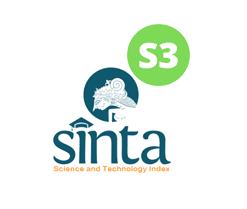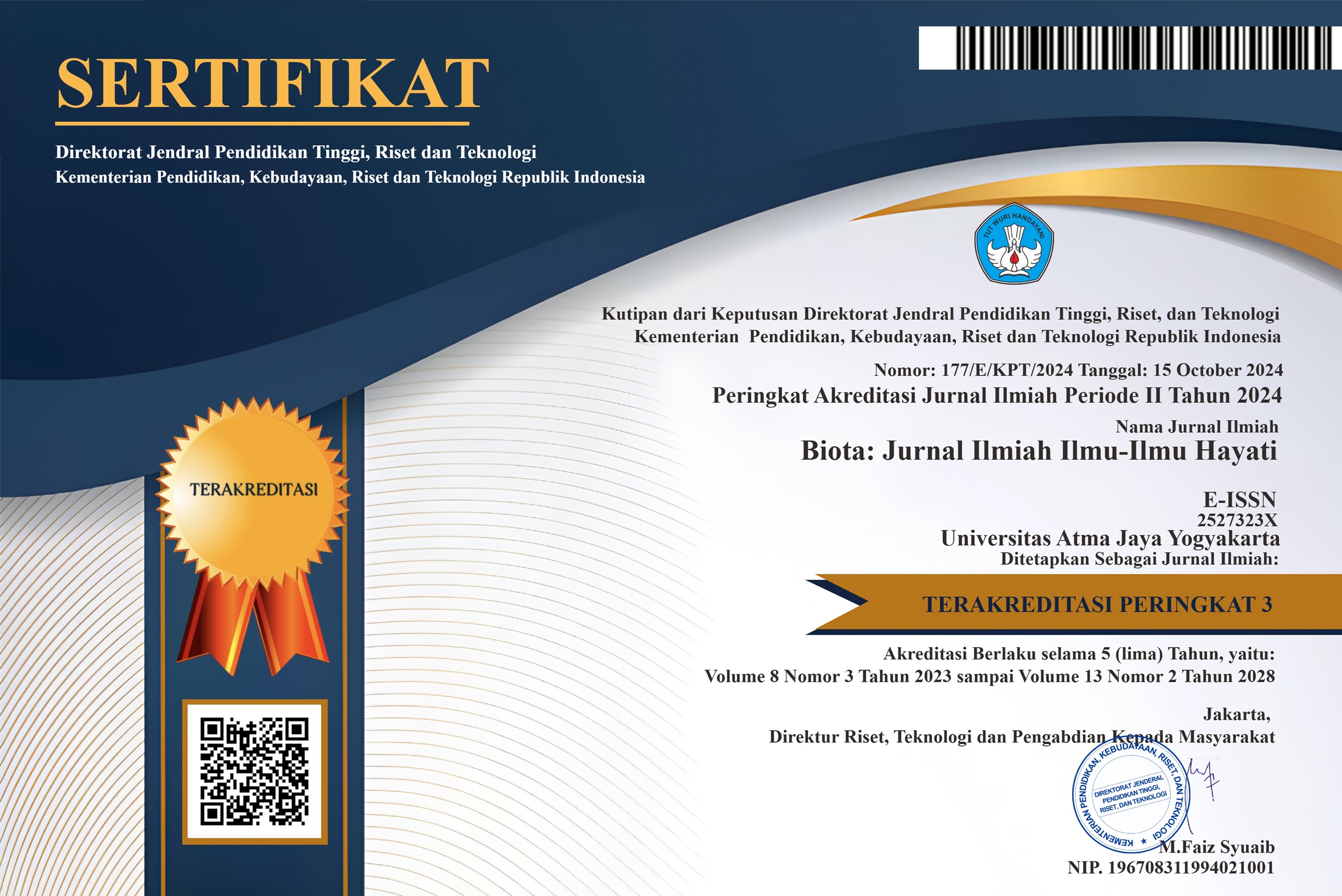Sebaran Tumbuhan Bawah Bekas Injakan Banteng (Bos javanicus d’Alton), Kerbau Liar (Bubalus bubalis), dan Rusa (Cervus timorensis) di Taman Nasional Baluran
DOI:
https://doi.org/10.24002/biota.v9i2.2894Keywords:
grassland, animal step printing, Baluran National ParkAbstract
National Park is a nature conservation area has a wild ecosystem and managed by zone system. Baluran National Park (BNP) is one of conservation area in Indonesia covered 25,000 hectare consists of 420 hectare of Bekol’s savanna and 150 hectare of Bama’s savanna. From 4.345 grass-feeding mammal in BNP, it has estimated that their total weight about 777,000 kg and the total feeding need about 77,700 kg per day. On the other hand, the biomass of the grasslands only 86.125 kg/ha/day, and both Savannas could only produce biomass about 40,478.75 kg per day which was not enough to support the daily animal feeding. Decreasing of the biomass in BNP was assumed as a result of habitat destruction by animal step printings. The purpose of this study is to know the effect of animal step printing to the biomass production. Samples was taking from April to December 1999 using quadrates method which was applied following the animal step printing and the control (non-stepped area). The plant samples were kept in plastic pocket and then identified in the laboratory. The total number of quadrates could be detected in this study were 150. From this study it was concluded that Grassland which was stepped by banteng, water buffalo and deer decreased the number of plant species until 38.88%, 27.27% and 18.18% respectively.Downloads
Published
06-11-2019
How to Cite
Suhadi, S., & Alikodra, H. S. (2019). Sebaran Tumbuhan Bawah Bekas Injakan Banteng (Bos javanicus d’Alton), Kerbau Liar (Bubalus bubalis), dan Rusa (Cervus timorensis) di Taman Nasional Baluran. Biota : Jurnal Ilmiah Ilmu-Ilmu Hayati, 9(2), 78–83. https://doi.org/10.24002/biota.v9i2.2894
Issue
Section
Articles
License
Authors who publish with Biota : Jurnal Ilmiah Ilmu-Ilmu Hayati agree to the following terms:
- Authors retain copyright and grant the Biota : Jurnal Ilmiah Ilmu-Ilmu Hayati right of first publication. Licensed under a Creative Commons Attribution-NonCommercial 4.0 International License that allows others to share the work with an acknowledgment of the work's authorship and initial publication in this journal.
- Authors are able to enter into separate, additional contractual arrangements for the non-exclusive distribution of the journal's published version of the work (e.g., post it to an institutional repository or publish it in a book), with an acknowledgment of its initial publication in Biota : Jurnal Ilmiah Ilmu-Ilmu Hayati, and as long as Author is not used for commercial purposes.












